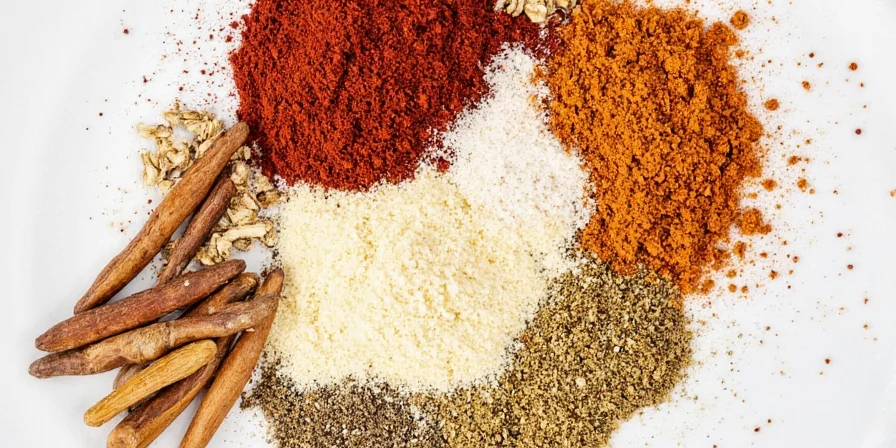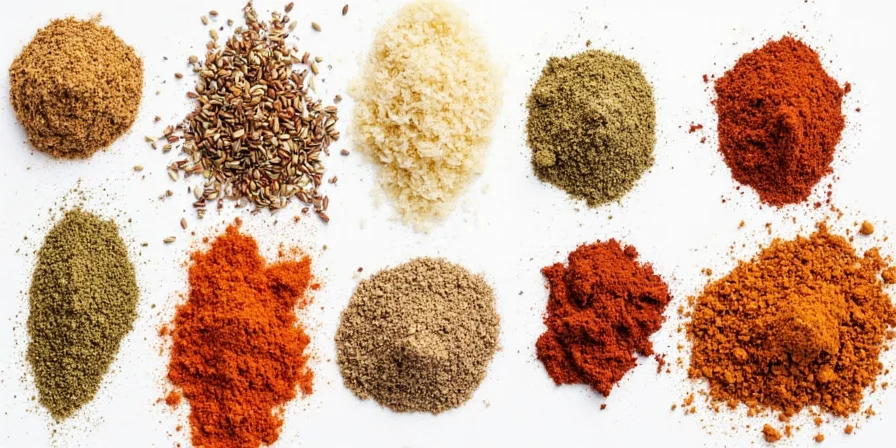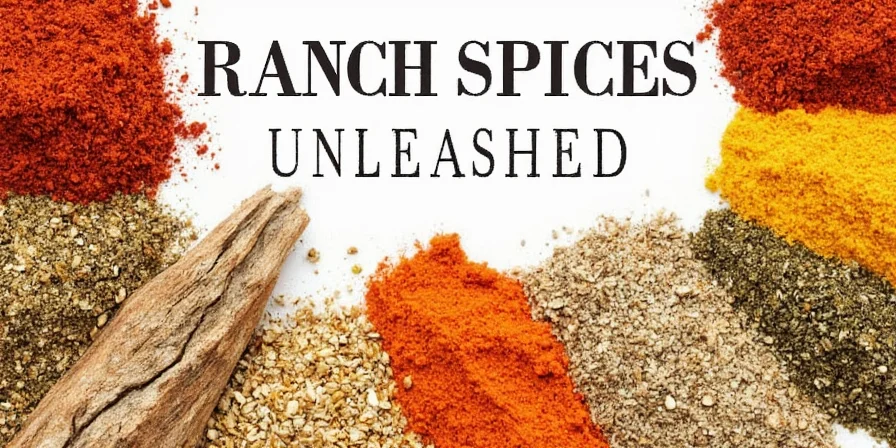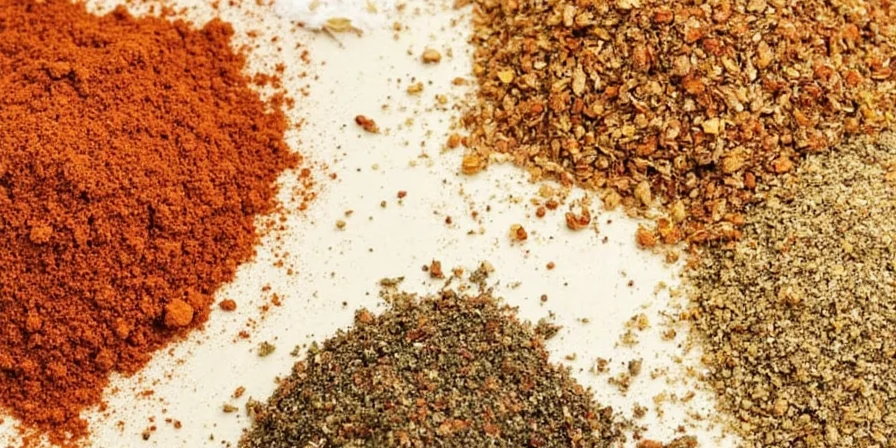Ranch spices are a dry seasoning blend that recreates the iconic flavor of ranch dressing without dairy. If you've searched for 'ranch spices,' you likely want to know exactly what goes into this popular blend, how to make it yourself, and how to use it properly. This guide delivers precise ingredient ratios, flavor science insights, and professional application techniques that most generic articles miss.
Table of Contents
- What Exactly Are Ranch Spices? (Core Definition)
- Ranch Spices Ingredients: The Complete Breakdown
- Flavor Science: Why Ranch Spices Work So Well
- Professional-Grade Homemade Ranch Spices Recipe
- How to Use Ranch Spices: 5 Proven Application Methods
- Storage Guide: Maximizing Shelf Life (6-12 Months)
- Popular Ranch Spices Variations (With Exact Ratios)
- Store-Bought vs. Homemade Ranch Spices: Detailed Comparison
- Frequently Asked Questions (Answered Precisely)
What Exactly Are Ranch Spices? (Core Definition)
Ranch spices refer specifically to the dry powder seasoning blend that replicates ranch dressing's flavor profile. Unlike ranch seasoning (which often contains buttermilk powder), true ranch spices consist only of dried herbs, garlic, onion, and salt without dairy components. This distinction matters because:
- Dairy-free ranch spices have longer shelf life (12+ months)
- They work better for dry rubs and spice coatings
- They're naturally gluten-free when properly formulated

Ranch Spices Ingredients: The Complete Breakdown
Professional chefs use these exact proportions for authentic ranch spice flavor. Note the critical absence of buttermilk powder (that would make it "ranch seasoning" not "ranch spices"):
| Ingredient | Precise Ratio | Function |
|---|---|---|
| Garlic powder | 22% | Provides umami base without raw garlic's acidity |
| Onion powder | 20% | Creates sweet foundation that balances herbs |
| Dried dill | 18% | Delivers signature grassy freshness (critical component) |
| Parsley flakes | 15% | Adds mild herbal notes without overpowering |
| Mustard powder | 10% | Creates subtle tang that mimics buttermilk |
| Sea salt | 12% | Enhances all flavors without sodium aftertaste |
| Black pepper | 3% | Provides background warmth (never spicy) |
Flavor Science: Why Ranch Spices Work So Well
Ranch spices succeed because they strategically activate multiple taste receptors:
- Umami pathway: Garlic and onion powders trigger glutamate receptors
- Herbal freshness: Dill provides terpenes that create cooling sensation
- Tangy perception: Mustard powder creates pH effect mimicking buttermilk
This triple activation explains why ranch spices enhance foods without overwhelming them. Unlike single-note spices, ranch creates flavor layering that works across proteins, vegetables, and starches.
Professional-Grade Homemade Ranch Spices Recipe
This restaurant-style recipe produces authentic ranch spices with 12-month shelf life. The key is proper ingredient ratios and storage:

Exact Measurements for Perfect Ranch Spices
- 44g garlic powder (not granulated)
- 40g onion powder (not dehydrated)
- 36g dried dill (crushed between fingers)
- 30g parsley flakes (not ground)
- 20g mustard powder (not seeds)
- 24g fine sea salt
- 6g freshly ground black pepper
Mix thoroughly in glass container. Store away from light. Shake well before each use. Makes 200g (7oz) total.
How to Use Ranch Spices: 5 Proven Application Methods
Professional chefs apply ranch spices using these precise techniques:
- Dry rubs: Apply 1g per 100g protein 30 minutes before cooking
- Roasted vegetables: Toss 0.5g per cup vegetables with oil first
- Popcorn seasoning: Mix 0.25g per cup with melted butter alternative
- Dry coating: Combine 1:1 with cornstarch for fried foods
- Flavor base: Bloom 1g in 10g oil before adding liquids

Storage Guide: Maximizing Shelf Life (6-12 Months)
To maintain peak flavor in ranch spices:
- Store in amber glass container (blocks light)
- Keep below 70°F (21°C) temperature
- Maintain below 60% humidity
- Use within 6 months for optimal flavor (12 months acceptable)
- Never store near stove or refrigerator
Test freshness by rubbing small amount between fingers. Faded aroma indicates diminished quality.
Popular Ranch Spices Variations (With Exact Ratios)
Customize your ranch spices with these professional variations:
- Smoky ranch: Add 5% smoked paprika, reduce parsley to 10%
- Spicy ranch: Add 3% cayenne, 2% chipotle powder
- Lemon ranch: Add 4% citric acid, reduce salt to 10%
- Herb ranch: Increase dill to 25%, add 5% chives
- Low-sodium ranch: Reduce salt to 6%, add 6% nutritional yeast
Store-Bought vs. Homemade Ranch Spices: Detailed Comparison
Key differences every consumer should know:
| Factor | Commercial Ranch Spices | Homemade Ranch Spices |
|---|---|---|
| Ingredient Quality | Often uses lower-grade herbs | Control exact herb quality |
| Preservatives | Typically contains silicon dioxide | Zero additives required |
| Cost per Ounce | $1.20-$2.50 | $0.30-$0.60 |
| Flavor Consistency | Varies by batch | Precise, repeatable results |
| Shelf Life | 18-24 months | 6-12 months |
Frequently Asked Questions (Answered Precisely)
What's the difference between ranch spices and ranch seasoning?
Ranch spices contain only dried herbs and aromatics without dairy components. Ranch seasoning includes buttermilk powder, making it technically a 'seasoning' rather than pure 'spices.' True ranch spices are dairy-free and have longer shelf life.
Can ranch spices replace ranch seasoning in recipes?
Yes, but with adjustments. Use 75% of the ranch spices amount called for ranch seasoning, then add 1/4 tsp citric acid per tablespoon to recreate the tang. For dressings, you'll need to add buttermilk separately.
Why does my homemade ranch spices taste different from store-bought?
Commercial versions often contain MSG (labeled as 'yeast extract') and anti-caking agents that alter flavor release. For identical results, add 0.5% MSG to your blend. The fresher herb profile in homemade versions actually indicates higher quality.
What's the most common mistake when using ranch spices?
Applying at wrong temperature. Ranch spices' volatile compounds degrade above 350°F (177°C). Always add during last 5 minutes of cooking or after cooking for optimal flavor retention.
How can I test if my ranch spices are still fresh?
Rub 1/4 tsp between dry palms and smell immediately. Fresh ranch spices will have strong herbal aroma with distinct dill notes. If primarily smells of salt or garlic, the delicate herb components have degraded.
Understanding ranch spices at this level transforms your cooking. By focusing on precise ratios, application timing, and storage conditions, you'll achieve consistent professional results every time. The difference between adequate and exceptional ranch flavor comes down to these specific details most articles overlook.
Start measuring your ranch spices by weight rather than volume, control your application temperature, and store properly—these small changes create significant flavor improvements you'll taste immediately.











 浙公网安备
33010002000092号
浙公网安备
33010002000092号 浙B2-20120091-4
浙B2-20120091-4